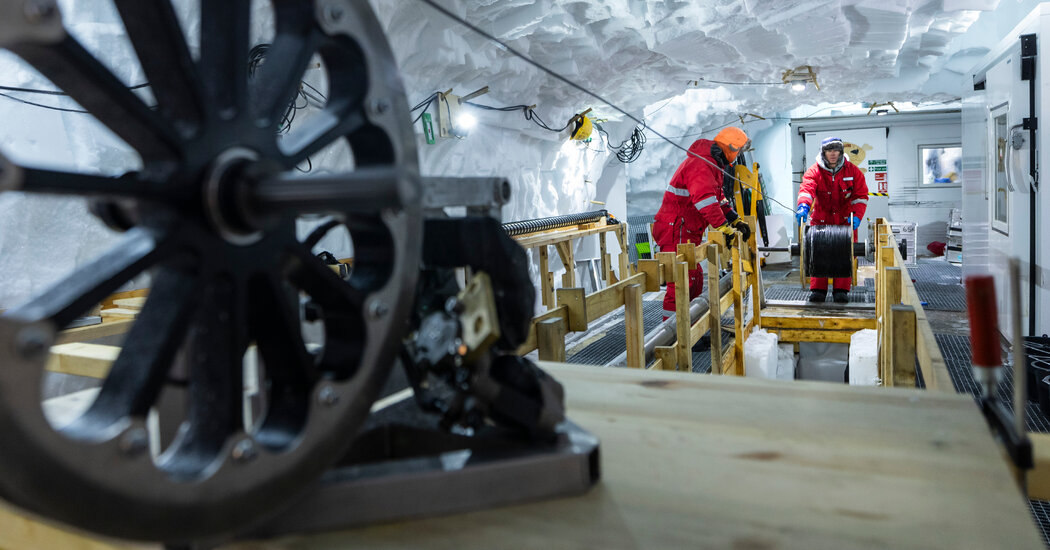In Greenland, the Ice Doesn’t Just Flow, It Quivers and Quakes

Climate|In Greenland, the Ice Doesn’t Just Flow, It Quivers and Quakes
https://www.nytimes.com/2025/02/06/climate/greenland-ice-quakes.html
You have a preview view of this article while we are checking your access. When we have confirmed access, the full article content will load.
By using a fiber-optic cable to detect tiny vibrations a mile below the surface, scientists discovered a surprising way that ice sheets move.

When Andreas Fichtner unspooled a fiber-optic cable into a deep hole in Greenland’s ice, he wasn’t expecting to discover a whole new way that glaciers move. Even when the cable started sending back data, his first reaction was skeptical.
“Rubbish,” Dr. Fichtner, a professor of seismology and wave physics at the Swiss university ETH Zurich, remembers thinking. “Just some electronic noise.”
This was August 2022. The field season in Greenland was almost over. The cold, the altitude, the long hours — all of it was wearing on Dr. Fichtner and his fellow researchers. But they’d been saving one of their cables for one last experiment, one that would let them measure tiny movements deep within the vast river of ice as it flowed toward the sea.
What they found raises questions about scientists’ assumptions about how the ice sheets of Greenland and Antarctica are moving and adding to sea levels worldwide.
That last cable picked up cascades of tiny “ice quakes,” some of them reverberating hundreds of feet, Dr. Fichtner and his colleagues reported on Thursday in the journal Science.
These quakes seemed to start near impurities in the ice that were deposited by volcanic eruptions, Dr. Fichtner said. Where these particles sit, the ice is weaker, more prone to cracking. Along these cracks, the ice sticks and slips and quivers as it moves, creating tiny seismic disturbances.






